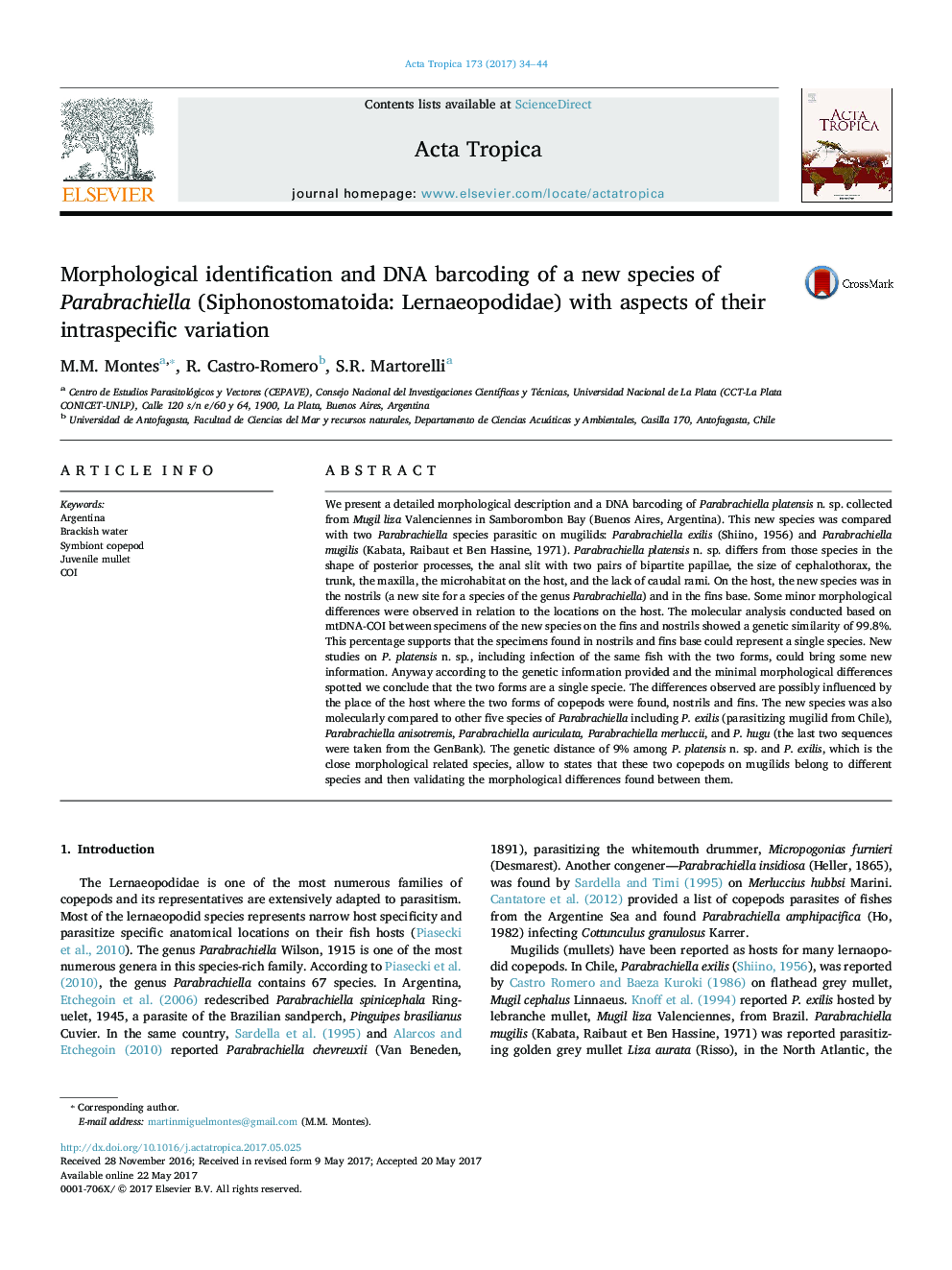| Article ID | Journal | Published Year | Pages | File Type |
|---|---|---|---|---|
| 5671076 | Acta Tropica | 2017 | 11 Pages |
We present a detailed morphological description and a DNA barcoding of Parabrachiella platensis n. sp. collected from Mugil liza Valenciennes in Samborombon Bay (Buenos Aires, Argentina). This new species was compared with two Parabrachiella species parasitic on mugilids: Parabrachiella exilis (Shiino, 1956) and Parabrachiella mugilis (Kabata, Raibaut et Ben Hassine, 1971). Parabrachiella platensis n. sp. differs from those species in the shape of posterior processes, the anal slit with two pairs of bipartite papillae, the size of cephalothorax, the trunk, the maxilla, the microhabitat on the host, and the lack of caudal rami. On the host, the new species was in the nostrils (a new site for a species of the genus Parabrachiella) and in the fins base. Some minor morphological differences were observed in relation to the locations on the host. The molecular analysis conducted based on mtDNA-COI between specimens of the new species on the fins and nostrils showed a genetic similarity of 99.8%. This percentage supports that the specimens found in nostrils and fins base could represent a single species. New studies on P. platensis n. sp., including infection of the same fish with the two forms, could bring some new information. Anyway according to the genetic information provided and the minimal morphological differences spotted we conclude that the two forms are a single specie. The differences observed are possibly influenced by the place of the host where the two forms of copepods were found, nostrils and fins. The new species was also molecularly compared to other five species of Parabrachiella including P. exilis (parasitizing mugilid from Chile), Parabrachiella anisotremis, Parabrachiella auriculata, Parabrachiella merluccii, and P. hugu (the last two sequences were taken from the GenBank). The genetic distance of 9% among P. platensis n. sp. and P. exilis, which is the close morphological related species, allow to states that these two copepods on mugilids belong to different species and then validating the morphological differences found between them.
